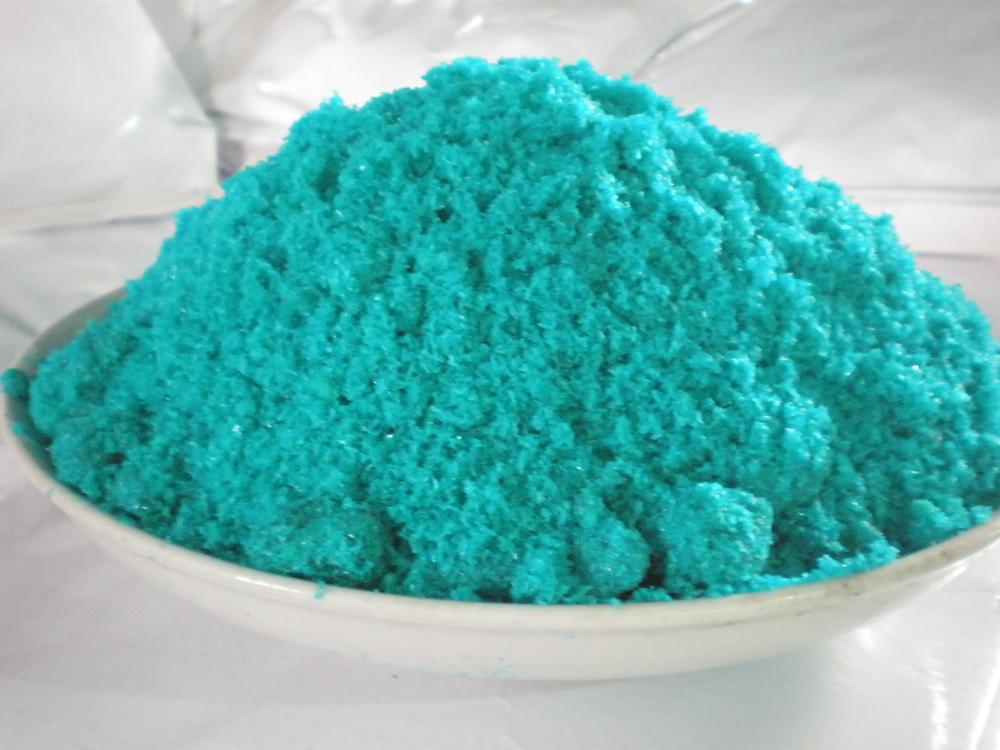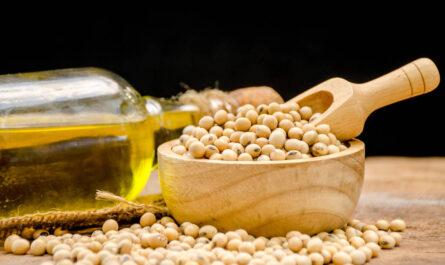Cupric chloride is an inorganic compound with the chemical formula CuCl2. It exists as blue or green crystalline plates or scales at room temperature. Cupric chloride is primarily used as a reagent in organic synthesis and electroplating. It also finds applications in biocides, textile printing, marine antifouling paints, fungicides, germicides and wood preservatives due to its biocidal properties.
Properties and Structure
Cupric chloride is a dimeric molecule consisting of two copper atoms covalently bonded to four chloride ions. The copper atoms are tetrahedrally coordinated to the chloride ions giving it a distorted tetrahedral geometry. It has a layered monoclinic crystalline structure at room temperature. An important property of cupric chloride is its hygroscopic nature due to which it readily absorbs moisture from the air. In water, it dissociates to form Cu2+ and Cl- ions. Cupric chloride has a blue or greenish color in the solid state which changes to blue when dissolved in water. Its melting point is around 290°C and it sublimes readily at higher temperatures without melting.
Uses in Organic Synthesis
Cupric Chloride is widely used as a Lewis acid catalyst in various organic transformations like Friedel-Crafts acylation, alkylation and glycosidation reactions. It catalyzes the formation of carbon-carbon and carbon-heteroatom bonds by activating the substrate and facilitating electrophilic substitution. Some common examples include acylation of aromatic hydrocarbons, Preparations of esters and amides, Reimer–Tiemann reaction for hydroxylation of phenylacetic acid derivatives, oxidative chlorination reactions etc. Due its greater Lewis acidity compared to other copper salts, cupric chloride is often preferred for these reactions.
Electroplating Applications
One of the major uses of Cupric Chloride is in the electroplating industry for depositing copper metal onto metal substrates through electrochemical deposition. It is used as an electrolyte in copper electroplating baths. When an electric current is passed through a solution containing cupric chloride and a cathode (object to be plated), copper metal gets reduced at the cathode surface depositing a thin layer of copper coating. Copper electroplating using cupric chloride solutions is extensively employed for coating electrical connectors and circuit boards in telecommunications and consumer electronics industries. Some other applications include decorative plating, hardware manufacturing, and corrosion protection of metals.
Microbiological Applications
Due to its biocidal properties, cupric chloride finds wide usage as an active ingredient in various microbiocidal formulations. It acts by disrupting the cell membrane permeability of microbes through oxidation of intracellular thiol groups. Cupric chloride is commonly used as:
– Algicide in paints to prevent growth of algae and other marine organisms on ship hulls and offshore structures.
– Wood preservative for protection against fungal decay and insect attack in lumber.
– Bacterial and fungicidal agent in agricultural applications like plant disease control.
– Disinfectant and sanitizer in hospitals, food processing plants and household products for its effectiveness against bacteria including MRSA and viruses.
Other Important Uses
Some other notable uses of cupric chloride include:
– Manufacturing of precipitated silica through hydrolysis of alkali silicate in the presence of cupric chloride catalyst.
– Production of cupric oxide which finds use as a pigment in ceramics, glass and enamel.
– Precursor to other copper salts like copper sulfate and complex materials like copper zeolites.
– Printing and dyeing of textiles through mordanting process utilizing its mordant properties.
– As an etchant for cleaning circuit boards and removing tin-lead plating in printed circuit board manufacturing.
– Analytical reagent in quantitative chemical analysis for determining chloride content and identification of various organic functional groups.
*Note:
1. Source: Coherent Market Insights, Public sources, Desk research
2. We have leveraged AI tools to mine information and compile it




